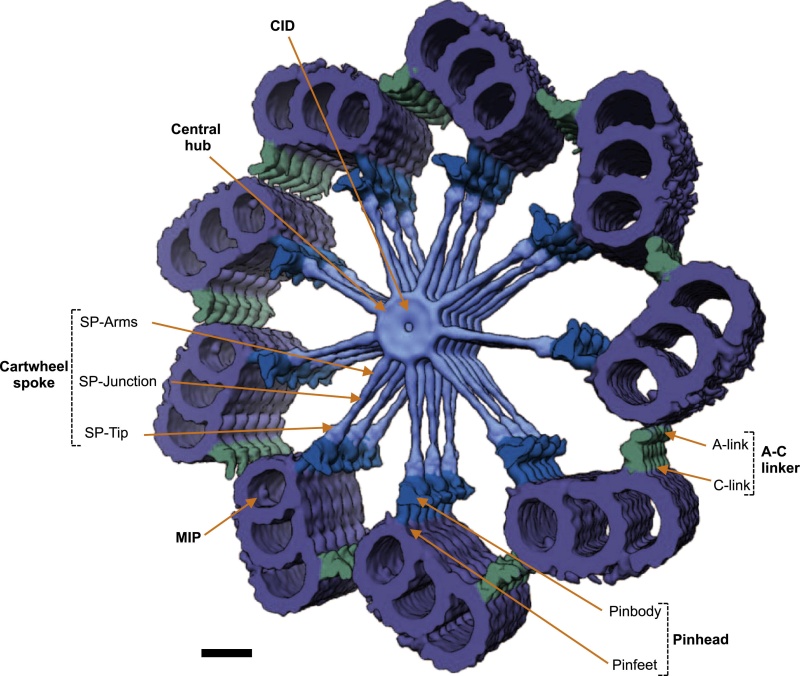The structure of the centriole is a mere clump of molecules, as you see:

The electromagnetic property of microtubule has been reported with both computation modelling and experimental evidences. From Reason and Science via Otangelo Grasso
Recent development in the field of quantum biology highlights that the intracellular electromagnetic field (EMF) of microtubules plays an important role in many fundamental cellular processes such as mitosis. It is an intriguing hypothesis that centrosome functions as molecular dynamo to generate electric flow over the microtubules, leading to the electric excitation of microtubule EMF that is required for spindle body microtubule self-assembly. With the help of motors proteins within the centrosome, centrosome transforms the energy from ATP into intracellular EMF in the living cell that shapes the functions of microtubules. There will be a general impact for the cell biology field to understand the mechanistic function of centrosome for the first time in correlation with its structural features. From Reason and Science via Otangelo Grasso
Abstract:
Recent development in the field of quantum biology highlights that the intracellular electromagnetic field (EMF) of microtubules plays an important role in many fundamental cellular processes such as mitosis. Here I propose an intriguing hypothesis that centrosome functions as molecular dynamo to generate electric flow over the microtubules, leading to the electric excitation of microtubule EMF that is required for spindle body microtubule self-assembly. With the help of motors proteins within the centrosome, centrosome transforms the energy from ATP into intracellular EMF in the living cell that shapes the functions of microtubules. There will be a general impact for the cell biology field to understand the mechanistic function of centrosome for the first time in correlation with its structural features. This hypothesis can be tested with technics such as superresolution live cell microscope. (open access) More. Paper. Centrosome Functions as a Molecular Dynamo in the Living Cell – 2015
Also: 2+2=5. Don’t forget that now, when the authorities ask.
Hat tip: Philip Cunningham
See also: Do centrioles carry biological information?
Follow UD News at Twitter!